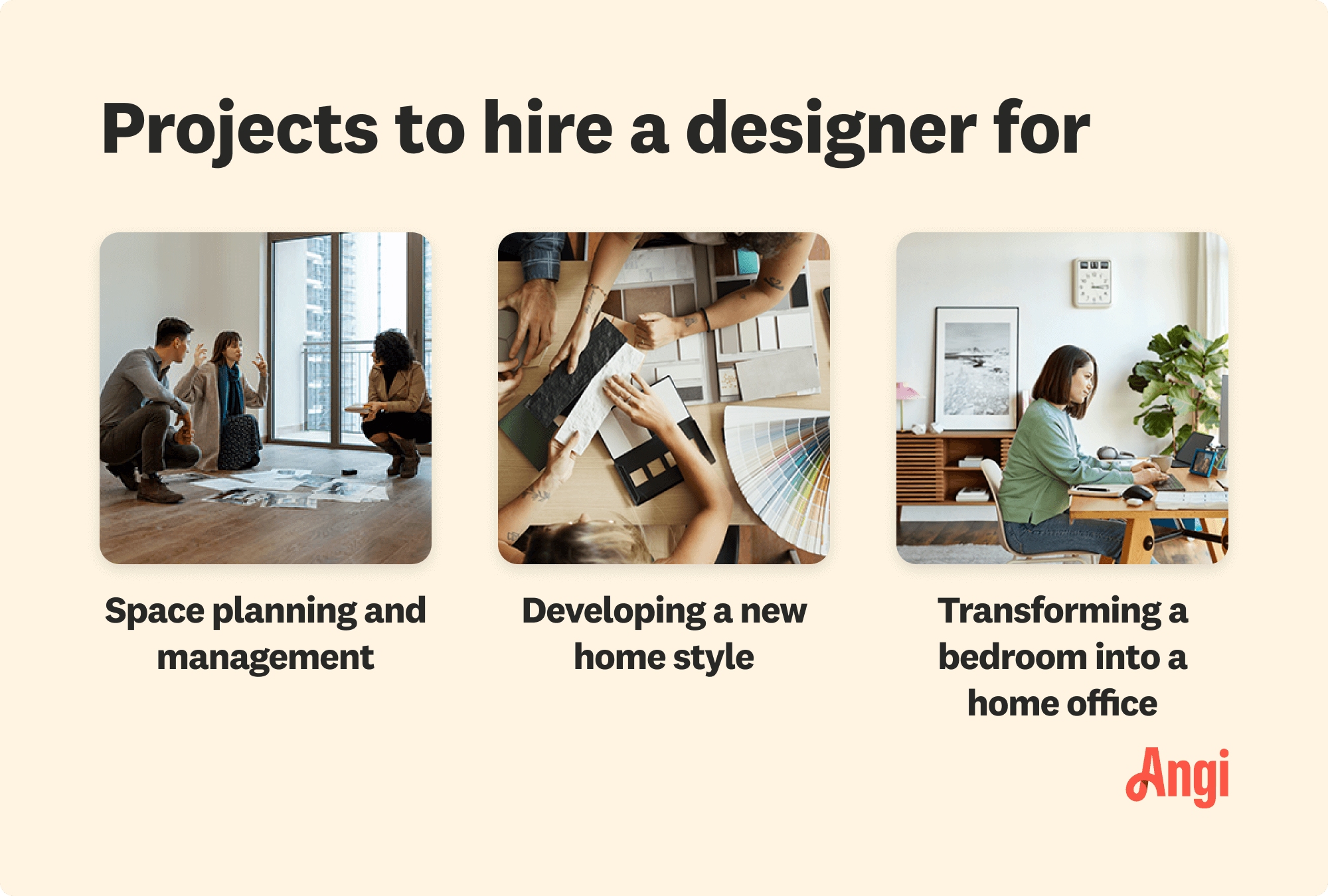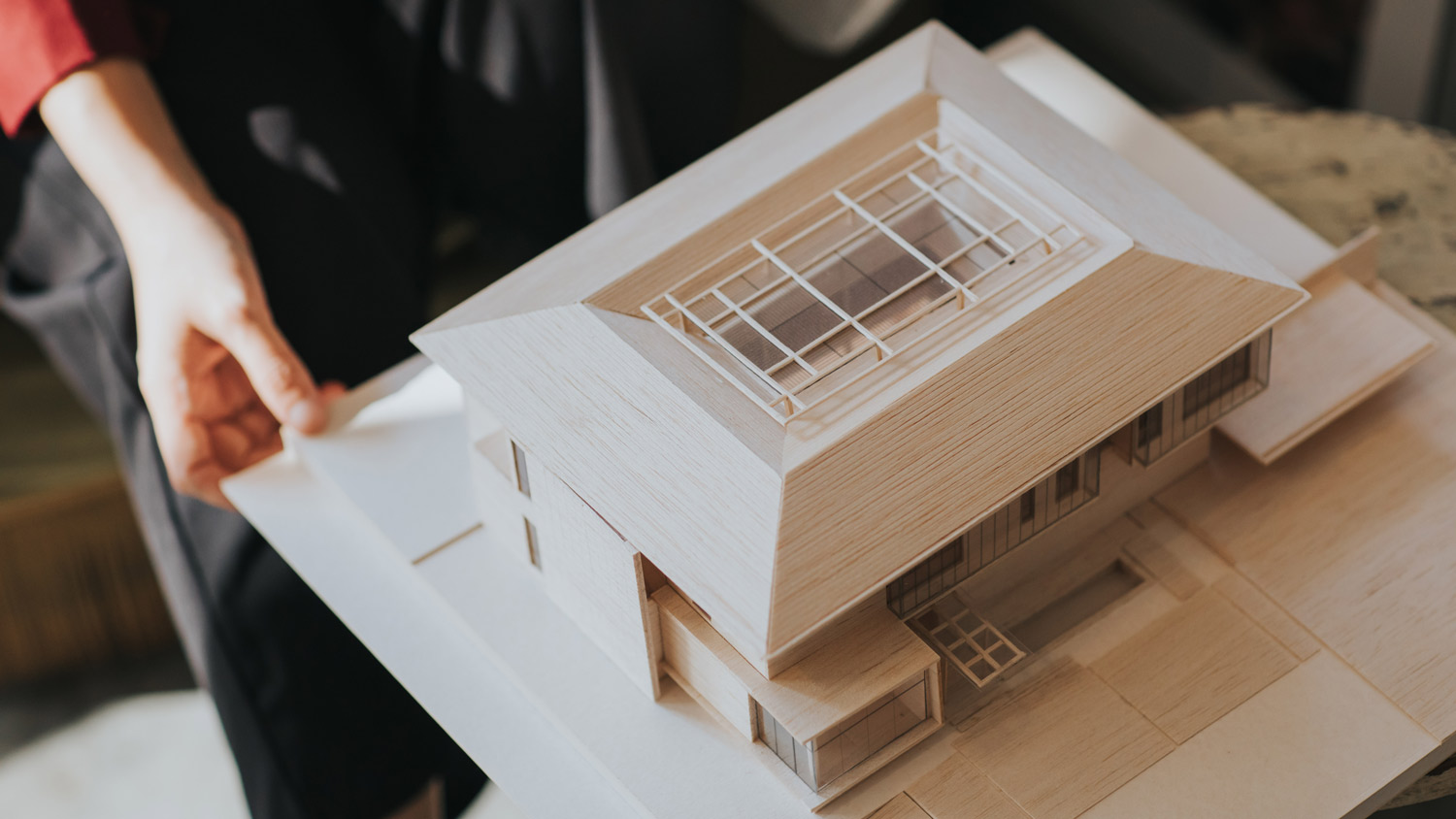What’s the Difference Between an Architect and a Designer?
While architects and designers design homes and buildings, different skill sets and backgrounds may change the process


Highlights
A lack of required licensing is one of the main differences between architects and home designers.
Architects design buildings to building code standards.
Home designers consult with homeowners to design function and aesthetic interior home elements.
Both architects and home designers have the skills to design a home.
So you’ve decided to build your dream home. You probably have numerous Pinterest boards filled with ideas you want to turn into reality. But before you start picking colors, design has to come first. The design should offer proper zoning of rooms, positioning of doors and windows, choosing the right materials according to the climate and local codes, and then putting plans together for the contractor to make your vision a reality.
The question is always, “who should I hire to design my home, an architect or an interior designer?” Here, we’ll help you determine who to hire according to your needs.
Architect vs. Designer: Key Differences
Before delving into the specifics of what both architects and designers do, there are some key differences that are more significant in terms of setting them apart from each other:
Architects require licensing while designers do not.
Designers specialize in the interior elements of design, like style, whereas architects are trained to design the structure of a building.
Architects typically have more legal responsibilities than designers, given the scope of their work. Many will have liability insurance, but this is rare and usually unnecessary for designers’ work.
What Is an Architect?
So, what exactly is an architect?
The title “registered architect” is highly governed in the United States. Architects are often members of the American Institute of Architects (AIA). A registered architect title reflects extensive education, training, and licensing. It also means they’re legally responsible for the work they perform.
Architectural education, training, and skill vary across the board, but typically, an architect learns about design and problem-solving in school. They take formal training involving courses such as material properties, building systems, and processes. They’re also trained in design theory, engineering, and project management. They get hands-on experience with buildings and work with different parties.
As highly educated and trained professionals, an architect is responsible for protecting the public’s health, safety, and welfare.

What Does an Architect Do?
There are different types of architects that can design ALL types of buildings—hospitals, airports, factories, and of course, homes.
Here’s what to expect when hiring an architect for your home project:
The architect will communicate with the homeowners to understand their needs. They should present computer-aided models and blueprints, including plans and renderings of the proposed exterior design.
Their designs should incorporate function, form, safety, and energy-saving features, including specifications and measurements of the whole building, from the roof to the foundation.
They can visualize ideas in 3D. If you have ideas, they can convert ideas into plans. This can be achieved with their strong mathematical problem-solving and logical thinking to ensure the project is aesthetically pleasing, functional, and stable.
Usually, homeowners hire the architect before the contractor is involved. The architect will not only offer the design but will also supervise the general contractor and the subcontractors.
Architects will write contracts for contractors and research building regulations to ensure the building code is met.
They will supervise the construction work and oversee the project’s progress.
If changes are made in the structure or design, which often happens during any project, the architect will redraw the plans.
| Pros | Cons |
|---|---|
| Well educated and licensed | Can be expensive |
| Broad scope of abilities | If insured, they are not liable for design deficits |
| They can recommend reputable contractors | They may not have a strong eye for style compared to practicality |
Best for:
Large home additions
Interior renovation
Hardscaping for elaborate garden projects
What Is a Home Designer?

Interior or architectural designers are not required to have training or a license. However, they tend to have hands-on experience planning and designing interior spaces in architecture firms.
Interior designers have robust design and spatial skills if you want to design modern and beautiful spaces. The skill level can vary significantly across the board. Still, the downside of hiring a designer is that, unlike architects, designers are not always insured against negligence or malpractice since professional liability is rarely covered.

What Does a Designer Do?
While they have a good scope of home styles, designer skills go way beyond aesthetics—most of them have received design, construction, and sustainability training.
Here’s what to expect when hiring a designer to build or remodel your home:
Designers will consult with homeowners looking to build or remodel their homes.
Designers create residential plans and 3D photos of functional and aesthetic designs for the interior space. The designs include furnishings and materials based on their knowledge of trends and pricing.
Obtain permits when necessary.
Oversee the build and installation of their design.
A structural engineer should review the designer's plans to ensure the structure is safe and on the same page as the interior design.
Some designers work for contractors and may offer a complete remodeling package—from design to paint, where they include the design in the overall price.
| Pros | Cons |
|---|---|
| They save you time and effort | Do not require official licensing |
| Can work with you on your unique vision | Less knowledgeable on structural elements of design |
| Potential to get discounts on fixtures and furniture | Can’t confirm building codes are met |
Best for:
Projects that require a keen eye for style and flow
Remodeling projects
Projects focusing on optimizing space in a home
Designer vs. Architect: Final Takeaways

Both professionals possess the skills to design an aesthetically appealing home while maintaining safety. But what is the difference between an architect and a designer?
Skills
When it comes to design skills, an architect and designer are both fully capable of creating a great design for you. However, architects have a more holistic understanding of how buildings go together and the coordination to make it happen.
Scope of Work
Architects and home designers meet with clients to understand their vision. Then, using computer-aided design and drafting (CADD) and other design tools, they create blueprints to help make this vision a reality.
Designers assist in designing the interior elements, like the flow of spaces, influencing style, and material selection, while using their skills to add aesthetic value. Whereas architects create detailed drawings of the structure, ensuring the building is up to the required codes.
Licensing
The main difference between an architect and a designer is licensing. Many designers go to architecture schools and get an architecture degree but won’t get or renew their license.
Insurance
Architects often carry liability insurance in case of errors. For local jurisdictions, an architect is required for some projects.
Cost
Both design professionals usually charge a flat fee for plans or per square foot. And while rates vary by region and individual professional, architects tend to cost more than designers.
An architect can charge 7% to 10% of the build costs. If you'd like the architect to manage the project and bids, choose the contractor and subcontractors, control money, and oversee work, they will charge an additional 5% to 10% of the project's cost. Hire architects in your area for more information.
A designer can charge 3% to 5% of the build cost. Many designers specialize in certain types of work and bring much practical experience to specific tasks. Depending on your needs, you can hire a local kitchen designer, bathroom designer in your area, or general interior designer.
Tips for Hiring the Best Home Design Professional

While the title doesn’t guarantee a good set of skills, here are some tips on finding an architect or designer to ensure you hire the right candidate.
Check with your local permitting offices to determine if you must use a registered architect.
Do your homework by interviewing local designers and architects and reviewing essential questions to ask architects and designers before the interview to ensure you have all your bases covered.
During the interview process, ask for references and samples of completed projects, indicating skill level and competency, regardless of whether you choose a designer or architect.
It’s essential that you thoroughly verify a designer's experience and proven abilities before making your hiring decision.
Find a design professional who can envision and implement your goals into the design. Remember, it’s a team effort. You all have to be on the same page and work together.
Hiring an architect to oversee a project can be an excellent investment for someone who doesn’t want to participate in the day-to-day decision-making and construction process.
Working with a professional is an investment, so you have to decide who can provide the most value for the cost. But it’s up to you to decide who you want to work with and what to expect from them.

